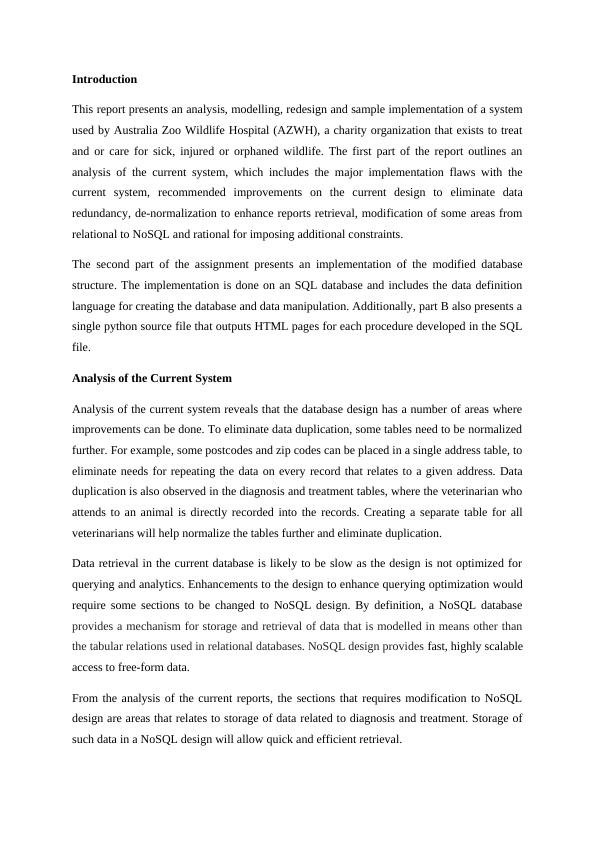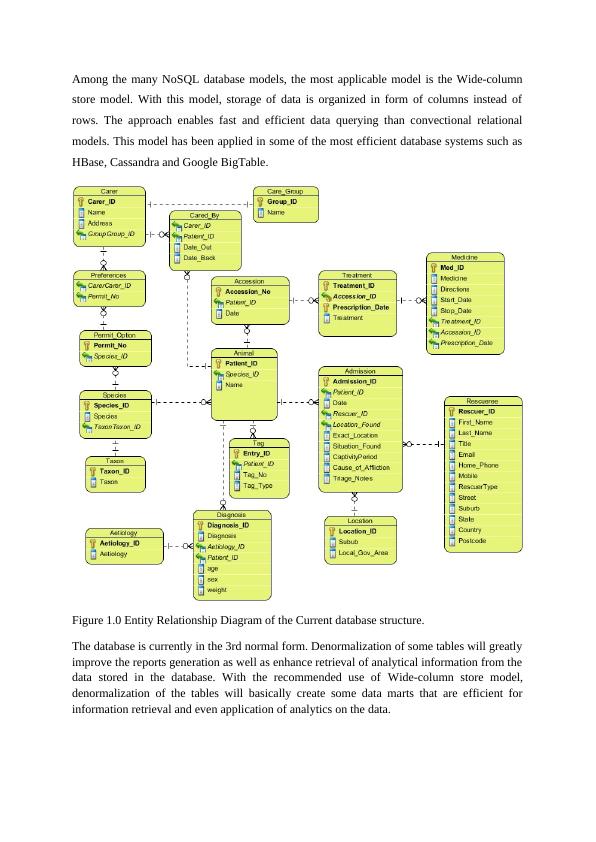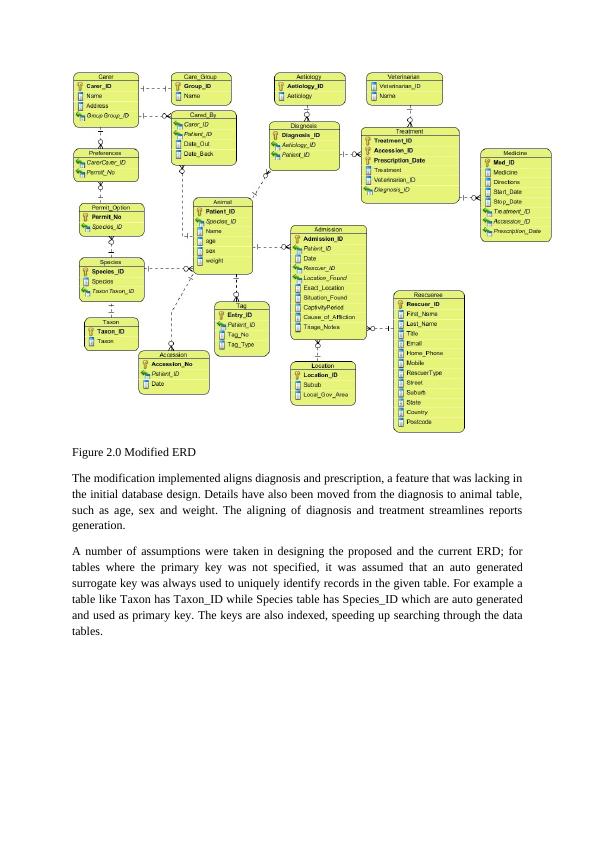Database Design for Australia Zoo Wildlife Hospital
Assignment for ICT320 Database Programming Task 2
15 Pages2483 Words417 Views
Added on 2023-06-03
About This Document
This report presents an analysis, modelling, redesign and sample implementation of a system used by Australia Zoo Wildlife Hospital (AZWH), a charity organization that exists to treat and or care for sick, injured or orphaned wildlife. The report outlines an analysis of the current system, which includes the major implementation flaws with the current system, recommended improvements on the current design to eliminate data redundancy, de-normalization to enhance reports retrieval, modification of some areas from relational to NoSQL and rational for imposing additional constraints.
Database Design for Australia Zoo Wildlife Hospital
Assignment for ICT320 Database Programming Task 2
Added on 2023-06-03
ShareRelated Documents
End of preview
Want to access all the pages? Upload your documents or become a member.
NoSQL Database and MongoDb
|5
|1252
|362
Database Management System Analysis
|17
|1981
|18
Big Data: NoSQL Data Model, Database Management Systems, Implementation
|36
|2837
|431
Big Data and Database Assignment
|10
|2615
|40
SQL vs NoSQL: Choosing the Right Database for Big Data Management
|10
|2698
|1
Systems Analysis and Database Design: Quiz 3
|5
|1091
|43




